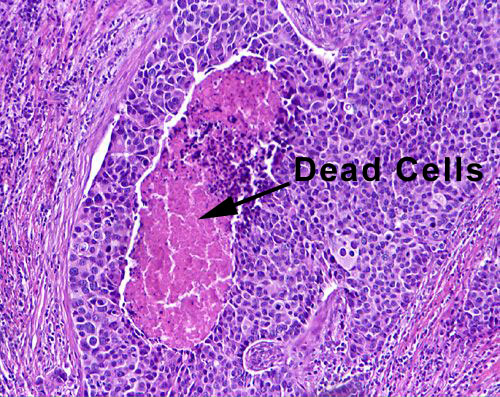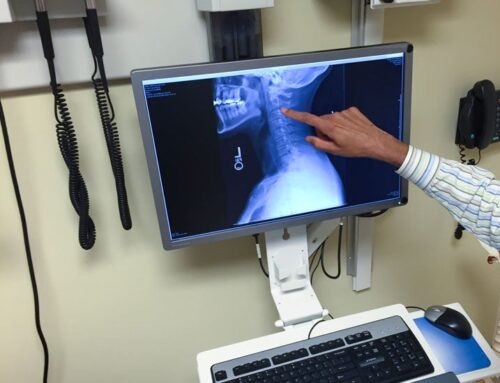If you’ve recently undergone screening for breast cancer and been diagnosed with comedocarcinoma, you may have questions about this early stage breast cancer, such as its potential severity and how it’s treated.
After a comedocarcinoma diagnosis, your next step should be a discussion with your doctor.
In this article, we’ll provide information that can help inform that discussion. We’ll take a look at how comedocarcinoma is graded (its risk for recurrence), along with symptoms, treatments, and outlook.
What is comedocarcinoma?

Comedocarcinoma is a type of breast cancer that’s considered very early stage (stage 0) or precancerous, according to the National Cancer Institute (NCI). It’s also a subtype of ductal carcinoma in situ (DCIS), which accounts for nearly 1 in 5 new breast cancer diagnoses, according to the American Cancer Society (ACS).
DCIS is considered a noninvasive breast cancer because it only affects cells in the milk ducts and has not spread to nearby tissues. However, nearly all cases of DCIS are treated to ensure the cancer doesn’t spread (metastasize) in the future.
Unlike other forms of breast cancer, comedocarcinoma consists of small plug-like growths that you may not realize you have until you undergo a regular breast screening. This precancer does not always cause symptoms, which makes routine mammography even more important in early detection.
Are there known causes or risk factors for comedocarcinoma?
While there are no known causes for comedocarcinoma, the following risk factors could increase your chances of developing DCIS:
- genetic mutations, including BRCA1 and BRCA2
- family history of breast cancer
- personal history of a benign breast condition
- using hormone replacement therapy longer than 5 years after menopause
- the older you are, especially if you’re over 50
- obesity
According to one 2020 study, risk factors for estrogen receptor-positive DCIS in African American women include:
- first-degree family history of DCIS
- early menstruation
- using birth control pills in the last 10 years
- having a first birth later in life
What are the different grades of comedocarcinoma?
Comedocarcinoma is considered a “high-grade” subtype of DCIS that contains dead cancer cells inside the lesions.
DCIS may be rated grades I to III, as follows:
- Grade I: This indicates a low risk of recurrence and means that the cancerous cells look similar to healthy ones under a microscope
- Grade II: Also called moderate grade, this means that the cancerous cells may grow faster and there’s a higher chance of recurrence.
- Grade III: This is also known as “high-grade” DCIS and means there’s a good chance that the cancer will return.
This means that while comedocarcinoma is considered a precancer, it’s also the highest grade — and potentially the most aggressive — form of DCIS.

What are the symptoms of comedocarcinoma?
Comedocarcinoma doesn’t always cause symptoms, but it’s possible to experience breast pain. In some cases, this type of breast cancer may also cause nipple discharge, which, unlike other types of breast cancer, is usually clear instead of bloody.
DCIS may also possibly cause breast lumps. This is unlike more invasive breast cancers, per the ACS, which may cause:
- breast swelling
- dimpled skin that may resemble an orange peel
- flaky, red, or thickened nipples and/or breast skin
- nipples that turn inward
- swollen lymph nodes under your arms or collarbone
You should see a doctor right away if you experience any changes or discomfort in the breast area. The same guidance applies even if you’ve already been diagnosed with stage 0 breast cancer or a benign (noncancerous) breast condition.
How is comedocarcinoma diagnosed?
Comedocarcinoma is most often found during a routine mammogram. In fact, it’s estimated that 70% to 90% of DCIS cases are detected as abnormal calcifications during this breast imaging method. These may appear as small white spots on a mammogram.
In addition to mammography, according to Breastcancer.org, a doctor may also confirm the presence of comedocarcinoma with a combination of:
- breast exam
- breast magnetic resonance imaging (MRI)
- breast ultrasound
- breast biopsy, where a small sample is taken via needle aspiration and sent to a lab for further analysis
Different types of DCIS, including comedocarcinoma, are confirmed via a biopsy sample under a microscope. “Comedo” describes what the cancer looks like.
Once comedocarcinoma is confirmed, a pathologist determines staging. The stage of a cancer describes how much cancer there is and how far it has spread. Staging helps doctors determine treatment and outlook.
Camedocarcinoma, like other DCIS types, are almost always stage 0 because the cancer has not spread beyond where it started.




